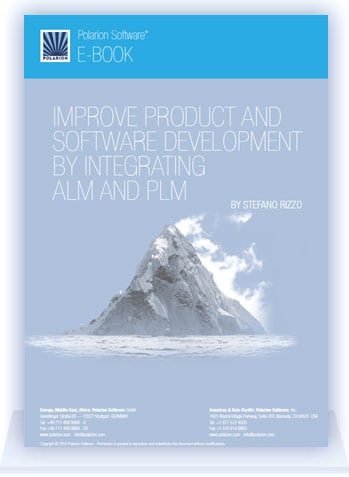Products
Improve Product and Software Development by Integrating ALM and PLM (Part 4 of 4)
In Parts 1, 2 and 3 of this series, I talked about the need for companies to begin integrating the management of their product and software development, the business benefits of such, and an overview...
In Parts 1, 2 and 3 of this series, I talked about the need for companies to begin integrating the management of their product and software development, the business benefits of such, and an overview of the general levels of integration of ALM and PLM.
In this final segment, I’ll present the use cases that can drive the integration.
Bravery: trekking through the ALM-PLM integration use cases
Let’s face it: closing the chasm and unifying ALM and PLM won’t be the easiest thing you ever attempted. I encourage you to accept the challenge, because the payoff will vastly outshine the effort. But in so doing, don’t lose sight of your limitations. You’ll find it useful to consider them as we walk through the basics of use-case driven integration for each of the 5 levels.
Level 1 Link and Trace Use Cases
- Link a product test case to a software test case
- Find all software test cases connected to a product test case
- Link a product defect to a software defect
- Find the product component(s) impacted by a software defect
Level 2 Change and Propagate Use Cases
- Change a product test case and propagate the change to the software test cases
- Change a product requirement and propagate the change to the impacted software user stories
- Fix a software bug and update the product BoM
Level 3 Act and Communicate Use Cases
- Change the status of a software change request into “analyze” when a product change request gets into the “evaluate” state.
- Automatically create a product defect when a software bug is discovered
- Assign a test run task to a software tester when a new product test round starts
Level 4 Align and Unify Use Cases
- Find the software source code running on a specific product version or variant
- Find the software variants that can be installed on a product
- Navigate the full BoM (with product and software artifacts) in the context of a product configuration, without leaving the PLM environment
Level 5 Collaborate and Report Use Cases

- Define and monitor unified Product and Software KPIs
- Co-engineer a product
- Implement and measure product and software process improvements
- Software and Hardware engineers as part of the same SCRUM team
What next?
For the ALM side of the integration, I encourage you to take a close look at Polarion® ALM™. It’s engineered from the ground up with an open architecture that facilitates exactly the kind of integration I’ve discussed in this series. Not only that, but your software development teams gain unparalleled efficiency and productivity end to end, from software requirements, through implementation, building and testing, on into change management and deployment, all in a cost-effective web-based solution, hosted in your network infrastructure, or securely in the cloud.
When it comes to integration with PLM, you don’t have to go it alone. Right now, Polarion ALM works with MATLAB® Simulink™ via a fully supported Connector that provides bi-directional traceability between the two systems. The near future will see more integrations with leading PLM solutions.
Download and share
As I mentioned in previous posts, the entire content of this series on ALM-PLM integration is available for download as a handy eBook. It’s free and you’re welcome to share your copy with colleagues who might benefit from the information.
DOWNLOAD FREE eBOOK
Improve Product and Software Development by Integrating PLM and ALM








